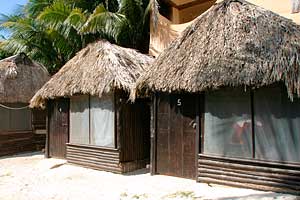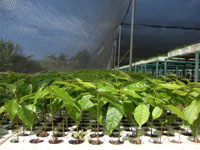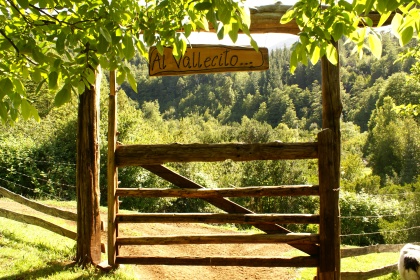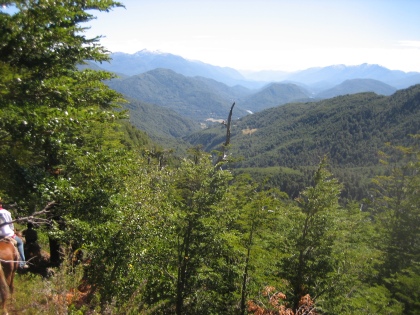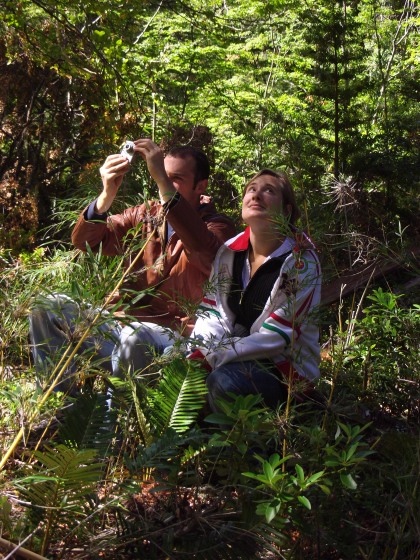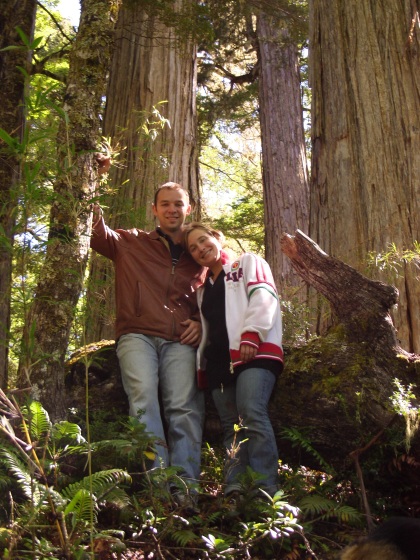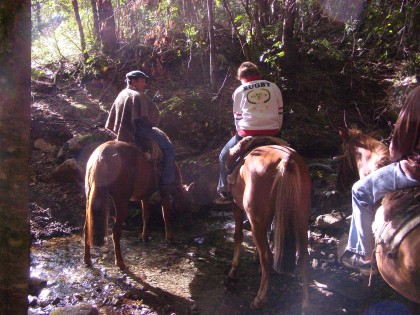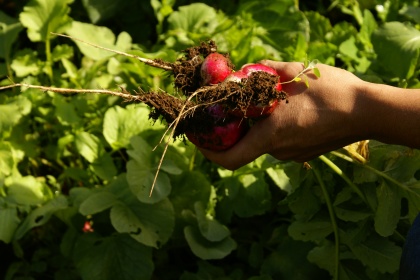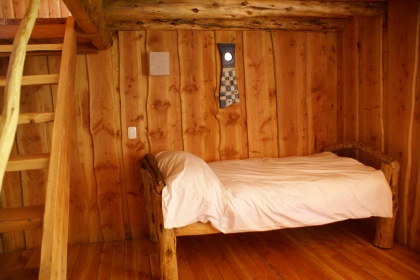Filed under: Environment, Spring Break, Summer Break, Tulum Eco Spring Break Service Trip | Tags: carbon footprint, Ecological Service, Ecoservice, ecotourism, Ecotulum, Enchanting Challenge, Enchanting Group, Mexico, reforestation, Spring Break, Summer Break, travelling green, Tulum
It seems to me that something is changing in the tourism-psyche. Now you can’t pick up a Lonely Planet travel guide without noticing their eco-tourism tips, and you can’t go to upstanding hotels without noticing their badges bragging about their green efforts. And you know what, it is all so great. The green movement shouldn’t be about pointing fingers and blaming those who aren’t making green efforts; it should be about making green NORMAL, and helping everyong get to that level.
Right now the movement is in its baby stages; the thought of ecotourism is a seedling thought that is just being planted…But it is growing and it is so exciting to see the movement take shape and gain momentum. It makes me really believe that someday, and someday relatively soon if we all help, being environmental will simply be normal.
There are some great links for those who wish to travel in an eco-friendly way. The first that I can recommend is EcoTrotters, an online community that allows users to search for eco-hotels and eco-destinations, and to then add their own input regarding such environmental travel endeavors. It’s a great site, and hopefully in the future it will become second nature to think of logging onto EcoTrotters when one wants to plan a vacation (because going green does not equal more work, and EcoTrotters proves that!).
Another A-MAZING site to check out for ecotravel is Ecovolunteer.org. This site is not for ecotourism, but rather ecovolunteerism, when one is willing to/wants to spend their vacation serving in an eco-way. It is a great site if one is interested in service–it helps you choose your destination either based on the place or the service work. I definitely recommend it for anyone who wants to do some eco-volunteer work while on vacation!
And OF COURSE, you can join Enchanting Challenge and our sponsored service trips to TULUM, MEXICO; ULAA, CHILE; MENDOZA, ARGENTINA; AND PUERTO MADRYN, ARGENTINA. The first-ever Tulum Educational Ecological Service Trip has concluded, but the next one is currently being planned for July 13th-17th. Contact me at sarahannmaxwell@gmail.com if you are interested in taking part!!! And look out for tomorrow’s post with reflections from Tulum service workers!
Filed under: Environment, Spring Break, Summer Break, Tulum Eco Spring Break Service Trip | Tags: bioregion, cenotes, college service trips, eco service, eco-education, eco-tourism, ecotourism, Ecotulum, Educational Ecological Service Trip, Enchanting Challenge, Enchanting Group, Flora Fauna y Cultura.org, Mexico, rainforest reforestation, reforestation, Service, snorkeling, Tulum, volunteer in the rainforest, Zahra
Today marks the last day of the Educational Ecological Service Trip to Tulum…But have no fear-this does not mean that you have lost your opportunity to embark on such an adventure! No, we at Enchanting Challenge have decided to make this a BIANNUAL trip, meaning that this year, we will host another Educational Ecological Service Trip in Tulum in JULY. Here’s the scoop:
- Placement type: eco-service, eco-education, eco-tourism
- Location: Zahra hotels in the Ecotulum resort in Tulum, Mexico
- Type of volunteers accepted: university students
- Maximum number of volunteers: 12
- Length of placement: 1 week
About the Service Trip & Locale:
The Ecotulum resorts and spas are located in the heart of Mayan territory in the Mexican Yucatan Peninsula. They are bordered on one side by jungle and by waves of the Caribbean Sea on the other side. The hotels are eco-friendly, with open-air cabana rooms where electricity is turned off at 11 pm every night.
The Ecotulum resorts and spas have always been the most peaceful escape, but now they offer something more: an opportunity to do service while enjoying this magical setting. Service workers will stay at the Zahra Ecotulum hotels for a discounted rate, and participate in ecological volunteer work for most of the days of their stay. Here are the activities that will be part of the service trip:
- Tour through the bioregion
- Snorkeling through the cenotes
- Participating in rainforest reforestation programs
- Helping protect turtle habitats in the Playa del Carmen
- Visiting the Tulum ruins

the mysterious Mayan ruins...check out our last post to learn more about the history and lessons from these ruins...
Each volunteer will stay in a Zahra cabana, and we recommend that each volunteer share the cabana to cut down on the cost of lodging. The hotel chef will prepare 3 meals a day, especially for the volunteers, and can provide vegetarian meals upon request for no extra charge.
Cost: We charge Ecotulum service workers a total of $372 for a one-week stay. This price includes all meals, transportation to-and-from the airport (if volunteers arrive between hours of bus operation), transportation to-and-from service activities, snorkeling, and lodging (if the cabana is shared between two people).
Transportation: Volunteers are responsible for getting themselves to Cancun airport. We will then arrange transportation to the Ecotulum resort through the ADO bus and taxis (and chartered buses if volunteers arrive during hours that the ADO bus is not in operation).
If you are interested in participating in this service trip, please contact me! Below is my contact information, and all the ways you can be a part of the Tulum Internet community:
- Email: sarahannmaxwell@gmail.com
- Skype: sarah.ann.maxwell4385
- Twitter: EnChallenge & SarahAnnMaxwell
- Facebook: Tulum-Bound Group & Tulum Event
Keep your eyes peeled for next weeks posts with accounts from this weeks service workers, equipped with photos, videos, and written reflections!
Filed under: Environment, Spring Break, Tulum Eco Spring Break Service Trip | Tags: eco service, ecological service work, Ecotulum, Educational Ecological Service Trip, Educational Ecological Service Work, Enchanting Challenge, Enchanting Group, Mayans, Mexico, Tulum
This week, the first ever Enchanting Challenge-sponsored eco service workers (Aleigha & Maria) are participating in ecological volunteer work in and around Tulum, Mexico. Their actions are beautiful for a variety of reasons…
First: the value of the lessons learned. As Aleigha and Maria take a tour through the bioregion and snorkel through the cenotes, they will learn of the different plant and animal species that co-exist in this region. Through these experiences, they will undoubtedly gain a deeper respect and understanding of the diversity and fragility of ecosystems–and they will also learn of the necessary precautions humans must take in their interactions with nature.
Second: the importance of their hard-work. As the volunteers greet each new day in Tulum, they will leave the area a little better off than it was before their helping hands arrived. One project they will get involved in is rainforest reforestation with the Flora Fauna y Cultura Organization. Reforestation helps to preserve the world’s biggest global warming preventer: TREES. Trees soak up so much carbon dioxide, and rainforest degradation is releasing all that stored carbon back into the atmosphere…Which is becoming deadly. Rainforest reforestation helps to off-set such damage to our planet and helps to restore our carbon balance, so we are not CO2 crazy, and getting hotter by the minute!!
Third: the shift towards eco-tourism. By choosing to go on an educational ecological service trip during their spring break, Maria and Aleigha are showing that you can have an exotic and sun-tanned spring break, while doing good in their chosen destination. They are proving that fun, relaxation, and volunteering can all coincide.
Fourth: lessons from the Mayans. Tulum sits nestled next to a UN-designated ecological safe haven. It is sidelined by beach, jungle, and ocean. It is a tangle of exotic life, with thousands of species dancing jungle tangoes to weave together this magical, mysterious oasis. But it is not just the wildlife that makes it magical, that makes it such a special place to learn lessons of biodiversity and preservation. It is also the history, of the place, the history of the Mayans, that makes Tulum so special.
When researching the Mayan ruins of the Yucatan Peninsula, I came across an opinion paper written by Institute of World Politics graduate student Joseph Duggan, entitled, “What Lessons Do Ancient Mayan Ruins Have For Legislators Today?” In his paper, Duggan points out how in its day, the Mayan world was the “First World.” He writes that “Mayan engineering was impressive, and Mayan astronomical science was at least as advanced as that of Europe.” Its feats–and its downfall–remain mysteries, to be sure, but one thing is clear: their success was due in part to their realization of their dependence upon the natural world.
Joseph Duggan writes that, “One thing that can be said is that the governing class…was obsessed with environmental issues…Concerned with perceptions on climate change in an economy and political regime that depended on agriculture and fishing and trade, Mayan leaders adopted bold policies for the cause of saving the planet.” So, as we service workers travel to Tulum and work in the rainforests and store away our lessons of the natural world, we must remember that as we gaze upon the ancient Mayan ruins of Tulum, we are gazing upon a lesson from an ancient people that understood an undeniable truth: society’s success depends upon society’s preservation of the natural world that bears our civilizations.
Filed under: Environment, Tulum Eco Spring Break Service Trip | Tags: airplane travel, Aviation travel, carbon emissions, ecotourism, Educational Ecological Service Trip, Hot Flat and Crowded, Mexico, Thomas Friedman, Tulum
Here is a beautiful fact: the world-wide middle class is growing exponentially. Across the globe, with an increase in access to technology–and thus, opportunity–standards of living are rapidly rising. Which is an amazing social feat.
However, though this is no-doubt one of the greatest accomplishments of the human race, this also means that carbon emissions are also rapidly rising, as more and more people seek a more comfortable (and consumptive) lifestyle. One of the sources of these increased carbon emissions is the rise in airplane travel. For so long, aviation travel was limited to the most economically fortunate eschelons of society. Now, airplane tickets are relatively affordable, which makes foreign travel a viable option for hundreds of millions of people the world over.
Take China for instance. On page 60 of Hot, Flat and Crowded, Thomas Friedman remarks how,
In 2006, more than 34 million Chinese traveled abroad, a 300% increase from the year 2000, according to Foreign Policy (July-August 2007). By 2020, 115 million Chinese are expected to vacation overseas, which will make them the largest bloc of tourists in the world and will certainly drive more airplane travel, hotel bookings, gasoline use, and CO2 emissions…China alone intends to construct more than 40 large airports over the next several years. In the US, the number of annual airline passengers, already approaching 1 billion, is anticipated to double by 2025. Greenhouse gases from planes could rise to as much as five times curret levels.
Now no one is saying DO NOT TRAVEL. It is an exciting and amazing thing that so many people today can experience different parts of the world, and encounter so many different opportunities. However, the environment can not afford that increase in carbon emissions. The solution: not a stop in travel, but rather a change in the way we travel. The solution lies in Ecotourism.
As Nick wrote in his blog post “Growing” Tourism, the past extravagances of travel (such as indoor skiing in Dubai and golfing in the Palm Desert) seem a bit obsolete now as the extent of their environmental strain becomes clearer and more unjustifiable. Travelers seem to be catching onto the changing tides in the tourism industry and hopping on the ecotourism jet stream, heading for more eco-friendly ventures such as adventure tourism and agritourism. For example, during the week I was in Ulaa on the organic farm, there was a group of Spanish tourists staying in Ulaa’s eco-friendly lodges. When asked if they were enjoying themselves, they explained that YES, when they are on vacation they much preferred to embark upon wildlife vacations filled with the nature that they miss in their daily city/office lifestyles.
The Spanish tourists pointed out an interesting point of view: ecotourism, while being healthy for the environment, can also be healthy for the travelers. It is important to not remove ourselves too much from nature, as we are, afterall, dependent upon nature. Ecotourism journies can help us regain that balance and literal breath of fresh air that we so need and that at times can be so hard to come by. So, it really is true that while you can help the world through ecotourism, you can also help yourself.
Right now, the pioneer volunteers Aleigha and Maria are doing just that on the Educational Ecological Service Trip in Tulum. They are staying in the energy efficient Zahra cabanas, where mosquito nets protect sleepers rather than chemicals and electricity stops buzzing at 11 pm, when it is not really necessary anyways. The girls have made their stay eco-friendly, and also their activities, as today they are snorkeling through cenotes and learning about plant-life and animal-life in the beautiful Tulum Bioregion. they will come away from this experience more aware of their natural surroundings and more aware of how to better interact with the environment. Meanwhile, they are traveling through sunny Mexico, swimming in the Caribbean sea waves and walking through the beach sands. Bettering the world and bettering themselves. Remember, contact me at sarahannmaxwell@gmail.com if you are interested in participating in a future Educational Ecological Service Trip to Tulum!!!
Filed under: Environment, Spring Break, Tulum Eco Spring Break Service Trip | Tags: bioregion, cenote dos ojos, ecological service work, Educational Ecological Service Trip, Flora Fauna y Cultura, Mayans, Mexico, Rainforest, reforestation, snorkeling, Tulum, Tulum ruins, turtles, Volunteer in Mexico
The past two weeks I have written an Ulaa series, based around the Enchanting Challenge organic farm service opportunity in southern Chile. For this week, I am shifting directions, and focusing on the Educational Ecological Service Trip in Tulum, Mexico, the service trip that begins today.
Today is the very first day of the very first Enchanting Challenge-sponsored sevice trip!!! This is the week of the Educational Ecological Service Trip in Tulum, Mexico, a service trip embarked on by two brave pioneering university students from Ripon College in Ripon, Wisconsin. Meet the pioneers here:
Aleigha and Maria arrive in Tulum this evening, where they will get settled and have dinner in the hotel dining room with Gaby, their trip leader! Then they will go to sleep because tomorrow begins their hard work in Tulum and the surrounding areas. Here is what the week has in store for them:
Day 1 (March 17th): A 2-hour tour through the Bioregion, including a visit to the regional school and the camping area, to be followed by snorkeling in the Cenote Dos Ojos!!
Days 2 & 3 (March 18th and 19th): Volunteering with beach clean-up projects, rainforest reforestation projects, and turtle-habitat protection projects, all done with the Flora Fauna y Cultura Organization!
Day 4 (March 20th): A visit to the Tulum ruins to learn lessons from the Mayan cultures native to this region.
Day 5 (March 21st): Beach Day!! A free day to enjoy the waves of the Caribbean Sea, a reward for a week of service work!
Day 6 (March 22nd): Departure 😦
I think this trip is a wonderful opportunity to experience an exotic place while also leaving the place a little better off than it was before you came. It is the best of both worlds–good for the traveler and good for the destination. As Nick wrote in his blog, ecotourism is a really great way to preserve fragile habitats. I think he says it best when he notes that,
By responsibly allowing rainforests, coral reefs, mountain ranges, and tropical islands to become tourist destinations, we can not only protect these threatened habitats, but provide incentives to permanently preserve them.
Ecotourism is a way to help our world, and the Educational Ecological Service Trip to Tulum, Mexico is a great eco-tourism opportunity! If you are interested in participating in an Educational Ecological Service Trip to Tulum later in the year, please contact me at sarahannmaxwell@gmail.com and I can provide you with all the details!!!
Filed under: Environment, Service Abroad, Spring Break, Summer Break, Ulaa Service, Winter Break | Tags: agricultural service, agriculture, Animal Vegetable Miracle, Argentina, Chile, farm work, farming, Organic farming, Patagonia, serve on a farm, Ulaa, volunteer on a farm, West Timor
Too Much Urbanization…
To continue on with yesterday’s theme, our world has shifted heavily out-of-balance, with the majority of its weight officially city-centered. This has left farmers out in the cold, leaving them to literally starve, and leaving many urbanites perilously close to starvation.
A Loss of Agricultural Knowledge…
In our culture, and in our world, there has been a glorification of non-manual work, which has resulted in steadily subsiding respect and knowledge of farm work. As Barbara Kingsolver writes in Animal, Vegetable, Miracle, “Most people of my grandparents’ generation had an intuitive sense of agricultural basics…Few people of my generation, and approximately none of our children, could answer any of those [agricultural] questions, let alone all. This knowledge has vanished from our culture” (8-9). And that is endangering all of humanity.
Yesterday we talked about how many farmers are forced to sell their farms and move to a city in search of money-making opportunities…Many never find their pot of gold, and end up living in a slum, paralyzed in their inability to use the agricultural skills they have. But today I want to talk about the farmers who stay on the farm…
Farmers are Hurting…and Suffering…
The ABC and BBC are doing a co-production on Indonesia. This week’s focus was on West Timor, an agricultural center of the archipelago. In the West Timor, the people, the farmers, are suffering rampant malnutrition. The reality is a laundry-list of nutritional travesties:
- 50% of children under 5 years older are malnourished
- 80% of children under 2 years old suffer iron deficiencies
- 35% of women are anemic
Why is this happening? Why, HOW can the very farmers starve when the nutrients are all in their own backyards?? There are a variety of reasons.
Why are They Suffering???
First: lack of nutritional education. Recently, there was a widespread propaganda campaign in West Timor urging farmers to eat rice, rice, rice. The propaganda left an imprint on the people, and now many farmers sell all of their produce to get more money, some of which they use to buy rice, which means they do not get most of their essential nutrients. Therefore, if only there was more nutritional education in West Timor, perhaps many Timoreans would be better-nourished and have the vitamins they need.
Second: climate change. Global warming is shortening, and in some years stopping, the rainy season. Each year less and less food grows because of the decrease in rain. Historically, there has been the growing season and the harvesting season. Now, West Timoreans have added a third season: the starving season. Now people in West Timor speaking of “the starvng season” as if it is a regular part of the year, something they have to work around. Things like cattle ranching that used to thrive in West Timor are now barely able to exist because of the droughts, and the people really are starving.
How Can We Help???!!!
Because of dangers posed in this region, there are fewer and fewer aid workers every year, and West Timoreans sink closer and closer to starvation. People here speak of the Lost Generation, because the children of today are so malnourished.
This story is being repeated all over the world. Because of climate change and because of a shift in the way we think about respectable work, the farmers are becoming more and more ostracized from society.
But we can all help to re-shift our world back into balance. Yesterday, Nick wrote in his blog about how ecotourism, of which agritourism is a big part!, can reallllllllllllly help in our efforts to curb climate change. He sites amazing examples of places where people used to make their money by economically devastating endeavors such as rainforest logging, etc., and now because of the rise in ecotourism, they make their living as guides for tourists through these very rainforests that they used to chop down!! In many of these places, deforestation has stopped and has been replaced by a surge in ecotourism.
In my eyes, I believe that agritourism, or rather agricultural service, is the best way to be an eco-tourist. It allows you to travel to exotic places, or places close to your home if you’d rather, while participating in ecologically friendly endeavors AND learning more about agriculture–the thing that keeps us all alive. By being an agricultural service worker, you are helping to restore the urban/rural balance that our world desperately needs.
Come Help at Ulaa…
There are thousands of opportunities for you to volunteer on a farm. Just check out WWOOF, and you can see so many listings in so many countries, your vision will blur!! Or move to France and apply for one of the 80,000 farm jobs they have open! But I am here to advocate for Ulaa because it has a special place in my heart…The week I spent at Ulaa was one of the best weeks of my life…I believe in the potential of Ulaa, but only volunteers can bring out its full possibilities. So I am calling you readers to come to Ulaa, and help bring it to its potential!! I think, I know, it can be the experience of a lifetime.
To learn more about Ulaa, visit the following websites:
Filed under: Environment, Service, Service Abroad, Spring Break, Summer Break, Ulaa Service, Winter Break | Tags: agricultural service, Argentina, Chile, Enchanting Challenge, Enchanting Group, Fairtrade, farm service, Patagonia, Ulaa, urban sprawl, urbanization, volunteer on a farm, WWOOF
Each year, the human race becomes more and more urban. In Hot, Flat, and Crowded, Thomas Friedman recaps how,
“In 2007, the United Nations Population Fund’s executive director, Thoraya Ahmed Obaid, issued a report stating that in 2008, more than half of humanity will be living in cities,” (page 28).
This is the first time in the history of humanity that we as a species have become primarily city-folk. And, as Thoraya Ahmed Obaid said, “we [the cities] are not ready for them [the millions of migrants],” (Friedman 28).
The reason for this mass-migration is the allure of opportunity. Industrial agricultural giants make independent farming quite difficult. Thus, millions of farmers are forced to leave behind their farms to try and stay afloat in the city, where there is hope of a different kind of occupation, perhaps factory work or domestic labor. As Thomas Friedman sums up, “People in India and China leave their villages and cram themselves and their families into megacities not because they actually like living that way, but, in many cases, simply because that is where the jobs and opportunities are” (168).
A very sad part of this reality is that millions of these migrants don’t find opportunity, and wind up living a slum life, a life filled with the violence and degradation that accompanies acute urban poverty. As Newsweek writer Sudip Mazumdar, a former slum dweller himself, recalls:
“Slum life is a cage. It robs you of confidence in the face of the rich and the advantaged. It steals your pride, deadens your ambition, limits your imagination, and psychologically cripples you whenever you step outside the comfort zone of your own neighborhood.” (Man Bites ‘Slumdog’ 1)
Another very sad part of this reality is that as millions of people are being driven off of the farm, many of those millions are losing their knowledge of our earth and the origins of our food. Many people who have a vast knowledge of agriculture simply cannot afford to keep farming. Thus, the ensuing result of this mass migration is that we as a human race are becoming more and more removed from the very thing that keeps us alive: food. It is incredible that we all eat (if we are fortunate!) 3 times a day, and yet know very little about where each morsel of nutrients we ingest comes from…It’s actually a bit scary if you think about it!
It surely can not be sustainable to have a society that ostracizes our very food producers. And people are catching on to that. And so, thank goodness, there are many efforts going on now to empower the village, to empower the farmer. A week and a half ago, I blogged about Fairtrade, and how consuming Fairtrade goods empowers the small farmer more than we can imagine. So don’t stop buying those Fairtrade goods! 🙂
But you might also want to consider spending time on a farm yourself, getting to know the work involved with growing our food. Especially in times such as these, with a global economic crisis eliminating urban jobs left and right, the farm might be a good place to learn a few new tricks of the trade. A recent article in The Economist magazine called “Back to the Farm” (from the print edition dated March 5, 2009) detailed how in France alone, there are 80,000 farming positions open across the country. With unemployment at 8.3% and increasing, many French people are considering finding a job on the farm.
This is not to say that a farming life is better than a city life. I only mean to say that when we can allow small farmers to farm, there will be better balance in our urban areas and in our rural areas. Working on a farm might not be for everyone, but perhaps you can give it a shot through a little volunteer time spent on the range. It can only promote awareness of the importance of farming and heighten your own awareness of the balance within our world.
Remember: the enchanting, organic Ulaa farm is waiting for you…
Filed under: Animals, Environment, Service, Service Abroad, Spring Break, Summer Break, Ulaa Service, Winter Break | Tags: agricultural service, agricultural volunteer work, agritourism, Chile, Enchanting Challenge, Enchanting Group, serve in Argentina, serve in Chile, serve in Patagonia, Ulaa, Volunteer in Argentina, Volunteer in Chile, Volunteer in Patagonia
Alas, our week at Ulaa has ended…Nick and I were both so sad to leave that little organic Chilean paradise…As we took the boat across Lago Puelo to the Argentine mainland, we looked back with longing, saying goodbye to all the passing scenery. But our sadness was kept at bay because we have decided to return to Ulaa in July to work with Martin for the whole month, helping to keep the farm working, and helping to further develop the service project! We are so excited.
As I mentioned in past posts, Martin, the amazing Ulaa caretaker, is looking to host about 5 service workers at Ulaa at all times. Each service worker can stay for as long or as short as they would like, as long as they work on the farm everyday. Each service worker will be well-fed and cozy in their log cabin, which is equipped with a fireplace, comfy bed, and bathroom.
The tasks that the service workers will be charged with include picking berries off the trees, making jam, baking bread, fishing for trout and salmon, feeding the chickens, and brushing down the horse. It’s a lot of work, but it is honestly so much fun. Nick and I had hands stained purple from picking berries, and clothing with a constant coat of flour dust, but we were having so much fun! Sometimes nothing beats working with your hands, working in the thick of nature, creating what you eat from the very ground up.
It was so much fun to be part of the Ulaa community, helping in our small ways to make things move more smoothly on the farm, and to share in the work that allowed everyone to be happily well-fed. It really felt like being part of a collective unit, of a team, in which we were all core members. We honestly can not wait to return for the month of July.
Ulaa is currently ready to host service workers. If you are interested, please contact me and we can discuss all the details!! You can join our Facebook group here, or you can research more about volunteering on an organic farm at WWOOF. Ulaa is currently listed on the Chilean WWOOF site, but you need to become a WWOOF member for $15 if you want access to the entire list of Chilean WWOOF farms. I am available all the time at sarahannmaxwell@gmail.com or via Skype if you would like to chat more in depth about volunteering on the beautiful Ulaa farm! Ulaa is honestly a magical place, but it needs service workers to grow to its full potential…
Filed under: Environment, Service, Service Abroad, Spring Break, Summer Break, Ulaa Service, Winter Break | Tags: agricultural service, agritourism, alerces, Argentina, Chile, Environmental Service, serve on a farm, Service, Ulaa, Volunteer, Volunteer in Argentina, Volunteer in Chile, Volunteer in Patagonia
All week we have been hearing about the alerces, the giant trees in the forests surrounding Ulaa. For the past few days I have been really looking forward to our trip into the alerces forest, but nothing could have prepared me for the incredible reality of the journey…
The day began at 8 am, when Nick, Martin, and I walked to the Rio Puelo. We crossed the river in a small rowboat and waited at a neighboring farm for Emiliano, the alerces guide, to pick us up.
The morning was crisp and we watched the fog roll through the moutains as we sat in the dewy grass. Pretty soon we heard Emiliano coming down the mountain, and sure enough, there our guacho guide appeared–wearing a woolen poncho and a wollen cap–a true Chilean gaucho. He was guiding 4 horses, which he then helped us mount, and then turned around and guided back up the mountain.
The four of us clambored up the mountain until we reached Emiliano’s house, a lovely farmhouse with beautiful surroudning farmland. There we tied up our horses and took a break, drinking coffee and mate (a traditional Argentine tea) with Emiliano and his family in their cozy kitchen.
Check out the sheep on Emiliano’s farm!!
After enough coffee and mate to revive us for the rest of the trip, we hit the saddle once again. Then we climbed higher and higher, trekking across rocky ridges and through creeks. It was unbelievably beautiful. For a fleeting but exciting second, we felt like the guachos we have always imagined being.
We finally reached the forest, a virgin forest dense with brush. We tied the horses up and marched through, climbing over and through thick plant life. Finally we came to the alerces. They stood so high that I couldn’t really see where they ended! I had to sit down and tilt my head all the way back to see where their height stopped!
Knowing it takes one year for an alerce tree to grow one millimeter, and seeing how tall these trees were, we asked Martin how old he thought they were. It turns out that the younger ones are 1500 years old!!! But apparently that was not that impressive…We were soon directed to the oldest of the trees, which is a whopping 5500 years old!!! One living thing that has been in the same place for nearly 6 millenia…The history held within that wood is hard to imagine…Seeing such a precious and unharmed living thing felt very sacred in a way…
After spending some more time in the forest, we walked back to our horses and began descending down the mountain. Down we went through the creeks across grasslands and rocky lands, past trees dripping with blackberries, past farms with cows and pigs and sheep, until we finally reached the river. We had completed our journey. And we will never forget it!!!
***
Martin, Nick, and I decided that the voyage to the alerces should accompany every service worker’s stay. At the end of every volunteer’s time here at Ulaa, each service worker should take part in this beautiful journey…It will change your life, and remind you of the beauty of the land that you are helping to cultivate.
Filed under: Animals, Education, Environment, Service, Service Abroad, Spring Break, Summer Break, Ulaa Service, Winter Break | Tags: agricultural service, agritourism, Argentina, Chile, Enchanting Challenge, farm work, farmwork, Patagonia, Service, Ulaa, Volunteering, volunteering in Argentina, volunteering in Chile, volunteering in Patagonia, volunteering on a farm
Today Nick and I worked with Martin at length to start planning the Ulaa service sector. It is exciting and beautiful to see this plan come together, and we all hope so much that some of our readers will be interested in the program we are constructing. Below I have written the four main points of our plan.
Las Paisajes—The Landscape
The farm is the heart of Ulaa. It is most important to realize that we are here for the farm. Ulaa’s fields grow walnuts, apples, blackberries, raspberries, strawberries, pumpkins, potatoes, onions, garlic, lettuce, basil, tomatoes, and more. Chickens roost in their hen house and trout and salmon swim in the lakes. The landscape is very, very alive, and we are here to keep it vibrant.
La Gente—The People
The people who come to Ulaa to serve on the farm must come with a proactive attitude and a hard-work ethic.
Ulaa is beautiful and it is impossible not to feel at peace here. BUT, it is important to realize that volunteers can not come simply for relaxation. Their stay here will be free or at a minimum cost, but they must come prepared to be a core part of the hard work that keeps Ulaa healthy.
The people, the volunteers of Ulaa, together will make a whole unit, with each person an integral part of the unit. The sucess of the whole depends upon each person fulfilling his or her tasks. For example, Ulaa is far from any major road or market; basic supplies that can not be made on the farm–like toilet paper–are delivered regularly; but other basic items–like bread and jam–that can be made on the farm must be made on the farm. Getting bread and jam at Ulaa is not a simple short-trip-to-the-store endeavor. Instead, for the jam, someone must pick the berries, take out their thorns, and boil them with sugar until they resemble jelly. For the bread, someone must mix the flour and yeast and let it rise, and then bake it. These are simple examples, but I mean to paint the picture of how everyone’s well-being, in addition to the well-being of Ulaa itself, depends on each person helping out where they can.
The collective contributions of everyone make Ulaa a beautiful experience. In our normal lives, things like bread and jam are items we buy at the nearest grocery store. At Ulaa, they are things you make from scratch with your own hands. It is all hard work, but the reward is priceless: you learn where your meals come from; you feel close to and a part of what you eat; and you gain a deeper respect and understanding of our relationship with nature and our place within nature.
Las Cabanas—The Cabins
All of the volunteers will stay in log cabins on the Ulaa property. The cabins are gorgeous–rustic, wooden, and overlooking the two lakes Ulaa sits between. Each bedroom has an incredibly comfortable wooden bed with a fluffy warm comforter. Each cabin has a bathroom that can be shared between the 2 or 3 inhabitants of the cabin.
Eating, like the farm work, is also a collective endeavor. The kitchen in the main lodge is where all the group meals are cooked. A gigantic oven and a whole lot of counterspace make it hard to have too many cooks in the kitchen. Like always, everyone will be a part of the meal process, and all the volunteers will eat 3 meals together everyday–and all of the meals will be made from food grown right from Ulaa’s soil.
Los Alerces—The Alerces
The Alerces are giant, ancient trees growing in the forests surrounding Ulaa. It takes one year for an alerces tree to grow a single milimeter. These trees loom high into the sky, giving you an idea of how old they really must be. Their majestic beauty helps to connect you to nature and remind you of the wonders of our natural world. Seeing them will make you excited to be cultivating the land in this beautiful place…
***
We are so excited to put the Ulaa service project together. It is something so close to our hearts, and something we know will be enriching to anyone who takes part in it. In the coming days, look for my posts that will detail exact volunteer duties, the costs of this experience, and more details on the fabric of Ulaa…



